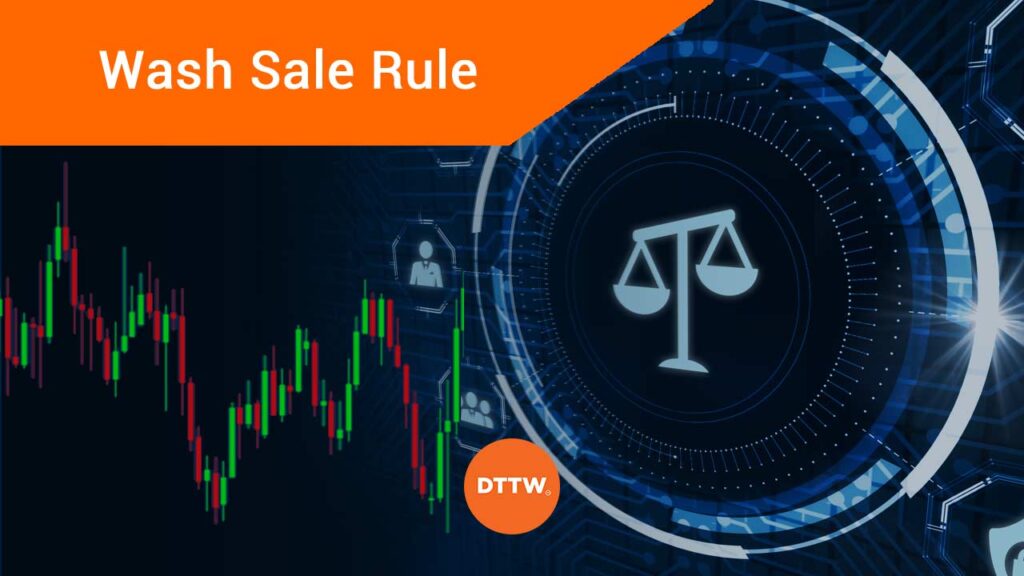Like all businesses, traders and investors are always trying to pay as little tax as possible, according to the law. A popular approach to doing this is known as tax-loss harvesting, which is the process of selling underperforming assets with the goal of offsetting capital gains taxes.
The Wash Sale Rule (WSR) is a measure introduced by the government and the Internal Revenue Service (IRS) to prevent investors from taking advantage of the tax code.
In this article, we will look at what a wash sale rule is and how you can go around it.
What is the IRS Wash Sale Rule?
The Wash Sale Rule refers to rules put in place to prevent an investor or trader who has a loss-making position from selling the asset and buying it back within 30 days.
The rule prevents you from taking a tax benefit if you exit the trade and then buy it or one that closely resembles it. In this case, the IRS prevents traders in the US from deduction losses related to these sales.
The goal of the lawmakers to enact this rule was to prevent investors from just selling stocks and other assets just for tax benefits.
Example of WSR
Assume that you are a trader who bought 200 shares of ABC at $10. This means that you spent $2,000 for this purchase. Since you use a broker like Robinhood, there were no commissions for this trade.
After holding the stock for a year, it has dropped to $8 and you decide to sell it. In this case, you will make a $400 loss. After a few weeks, the stock drops back to $6 and you decide to purchase the stock now that it is extremely cheap. You decide to buy 100 shares at this price, spending $600.
When you do this, since 30 days have not yet ended, the wash sale is triggered.
As a result, the initial loss you made when the stock tumbled is disallowed as a deduction when you are filing your taxes. Therefore, your total cost in this transaction will be $1,000. That is the initial loss and the current acquisition.
As such, when you sell the stock later at a profit, you will need to pay back higher taxes. At the same time, if you ultimately sell the stock at a loss, the higher cost basis will increase your loss size that you will claim a deduction.
»When to Enter (and Exit) a Trading Position?«
How to avoid Wash Sale rule
Correlation
The main challenge for the wash sale rule is that it does not explain what an exact similar asset is. This is a loophole that many investors and traders take all the time. That’s because many financial assets tend to move in the same direction because of the concept of correlation.
For example, oil and gas companies like ExxonMobil and Chevron tend to move in the same direction. The same is true for identical retailers that target the same demographic.
Therefore, if you were invested in one oil company, you can turn around and buy another oil company. In this case, the IRS will have a difficult period of explaining that the two firms are equally identical.
ETFs
Another way is to use exchange-traded funds. If you were long an ETF that tracks the S&P 500, you can turn around and buy one that tracks the Russell 1000 or Nasdaq 100 index. In most cases, these major indices usually move in the same direction although the degree could be different.
If you are trading crude oil and you are long Brent, you can go around and buy an ETF that tracks oil prices. Alternatively, you can even buy the West Texas Intermediate (WTI). While the assets may sound identical, the SEC may have a challenge making the case.
Day Trading and Wash sale rule
In most cases, the Wash Sale rule was developed with highly sophisticated investors and traders in mind. However, it also inadvertently applied to normal day traders. For one, it only applies to American traders who are buying and selling assets with a CUSIP number.
It applies for stocks, exchange-traded funds (ETFs), and options, among other traders. For American traders, we recommend that you consult with an experienced tax professional to figure out how to report the wash sale rule and how to minimize your liabilities.
Final thoughts
The American tax code is often complicated especially for traders. Indeed, most of them are usually not aware of the concept of wash sale rule. In this article, we have looked at what this rule is and how you can use it well to reduce your taxes.
Were you aware of this trading rule? Have you developed other strategies to get around it?
External Useful Resources
- How to Avoid Violating Wash Sale Rules When Realizing Tax Losses – Investopedia
